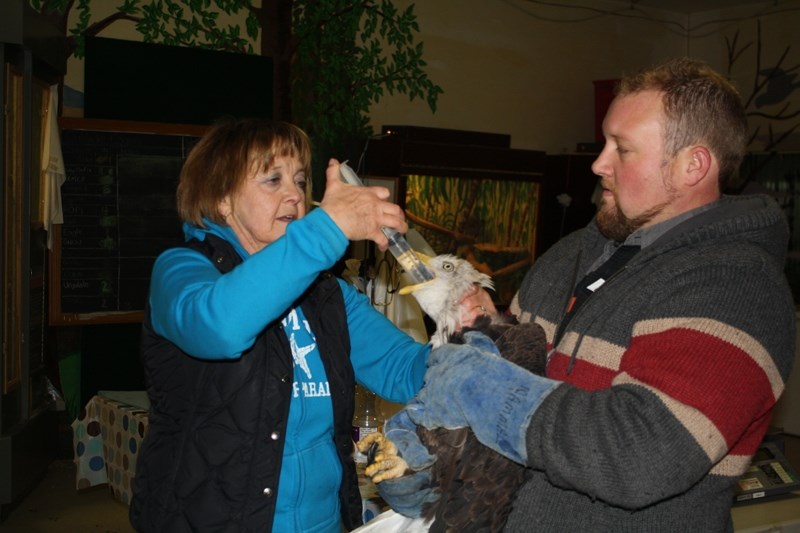For the first time in its 32-year history, the Medicine River Wildlife Centre is reaching out to Central Alberta communities for financial support.
The pitch to regional municipalities is to help with the cost of the many services the centre provides from its headquarters near the hamlet of Raven, a 30-minute drive west of Innisfail.
This includes the 24-hour line for citizens needing help with injured wildlife, the cost of travelling to pick up injured animals, and providing educational programs to communities, schools and seniors' residences. The centre also needs the additional financial support to help pay for the cost to provide problem-wildlife animal services, which last year resulted in more than 300 calls and visits throughout the region.
The non-profit agency, which began in 1984, is now running on an annual budget of about $500,000, but in a letter sent out to Central Alberta communities in December, it was noted the demand for the centre's services is increasing annually and now “putting a strain” on the agency's limited resources.
Carol Kelly, the centre's executive director, said the centre now employs nine full-time staff members, with four donating “100 per cent” of their wages back.
“We are very proud of that fact that we are good at stretching a dollar. Nobody is making huge wages. We are not extravagant. We would just like to be able to hire more staff,” said Kelly.
But with demand for services increasing throughout Central Alberta, the agency needs help to meet its mandate of public education and to rescue injured and sick animals, said Kelly, noting that in 2015 the City of Red Deer, the heaviest user of the centre's resources, began to contribute $25,000 annually.
“I don't think we do as much service there (smaller communities) so I would not expect them to come up with that type of money. We certainly realize that different communities have different budgets,” said Kelly.
She said five responses from Central Alberta municipalities have so far been received, with two saying they were unable to help because 2016 budgets had already been set. However, three others – Olds, Stettler and Lacombe – requested more statistics and information before giving the centre a final answer.
“If a little community was to say, ‘All we got is $500 in our budget as we are just a tiny village', that would be helpful, and if some of the bigger communities could manage $5,000 or $10,000,” said Kelly.
“We are not asking for a number. We are saying, ‘Based on the services we are providing you and what you have available in your budget, can you help us?'”
In the meantime, the centre continues its fundraising campaign to complete its new facility. The old building, which was built in 1991 and includes the centre's hospital, is no longer usable. The agency has so far raised $300,000. That money has already been used to move power and gas lines, install a septic system, and to begin construction for a concrete foundation.
Kelly said the centre has been approved for a $125,000 provincial grant, but that is dependent on raising another $400,000 the agency needs to complete its building project.
She said discussions late last year with four potential donors fell through but she is optimistic that a “new” idea that was discussed at a meeting last week could lead to the organization being able to have its new hospital built by spring.
For more information on the wildlife centre and its programs, services and fundraising campaign, visit its website at www.medicineriverwildlifecentre.ca.
Carol Kelly, executive director of the Medicine River Wildlife Centre
"We are not asking for a number. We are saying, 'Based on the services we are providing you and what you have available in your budget, can you help us?'"



